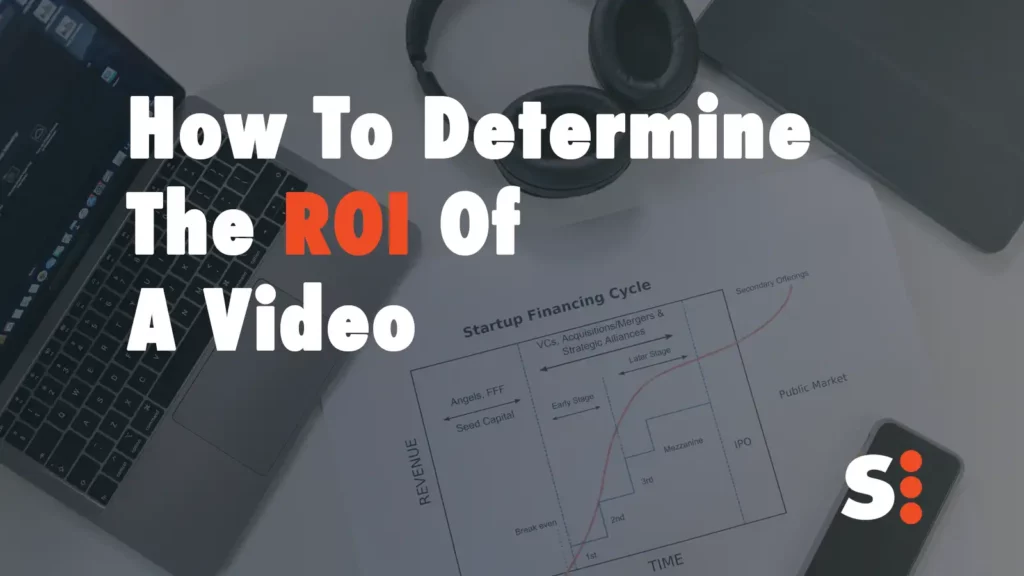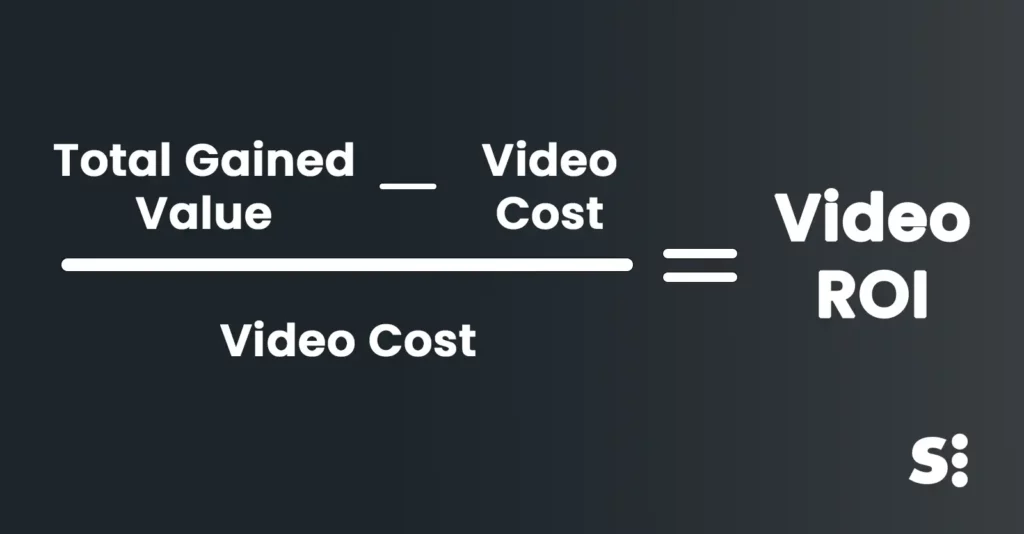
Are you tired of creating videos that don’t seem to have a measurable impact on your business? We get it – producing videos can be time-consuming and expensive, so it’s important to make sure you’re seeing a return on your investment. But how do you actually determine the ROI of a video?
Fear not, because in this blog post, we’ll be sharing some tips and tricks for calculating the ROI of your videos.
Whether you’re creating promotional videos, product demos, or any other type of video content, understanding how to measure the ROI can help you make better decisions and maximize the impact of your video strategy.
So grab a pen and paper (or your favorite note-taking app) and let’s dive in!
Identify Your Goals
Identifying your goals is the first step in determining the ROI of your video. By having clear and specific goals in mind, you can measure the success of your video and determine if it was worth the investment.
Here are some common examples of goals you may have for your video:
- Increase brand awareness: A video can be an excellent tool for introducing your brand to new audiences and increasing its visibility. Your goal may be to get your brand in front of a certain number of people or to increase your social media following.
- Generate leads: Videos can be used to capture leads by promoting a product or service and encouraging viewers to sign up for more information or a free trial.
- Improve customer retention: Videos can be used to engage and delight existing customers, which can lead to increased loyalty and retention.
- Boost sales: Videos can be used to showcase a product or service and convince viewers to make a purchase.
- Educate and inform: Videos can be used to educate and inform viewers about a particular topic or issue, which can position your brand as a thought leader and increase your credibility.
Once you have identified your goals, it’s important to set specific and measurable metrics that you can use to evaluate the success of your video.
For example, if your goal is to increase brand awareness, you may want to track metrics such as social media shares, views, and engagement. If your goal is to generate leads, you may want to track metrics such as form submissions or the number of leads that convert into paying customers.
By setting specific metrics and tracking them over time, you can determine the ROI of your video and make data-driven decisions about future investments in video production.
Keep in mind that the metrics you track will depend on your goals and the type of video you are producing, so take the time to identify the metrics that are most relevant to your specific situation.
Identifying your goals is a great first step in determining the ROI of your video. By setting specific and measurable metrics, you can better evaluate the success of your video.
So take the time to identify your goals and set the metrics that will help you measure your video’s success.
Related: How To Set Video Marketing Goals For Growth in 2023
Determine Your Costs
Once you have identified your goals and the type of video you want to produce, the next step is to determine the costs associated with creating the video. Understanding the expenses involved in video production is crucial in determining the return on investment (ROI) for your project.
Unless you pay a third party to make your video, there are various costs to consider. These include pre-production costs such as location scouting, scriptwriting, and storyboarding, as well as production costs such as equipment rental, crew fees, and talent fees. Post-production costs such as editing, music licensing, and color grading should also be taken into account. If you had a third party make your video, they will usually charge you a lump sum. This definitely makes it easier to determine your costs.
Related: Should You Make A Video In-House or Hire a Third Party?
To accurately determine your costs, it is important to break down your project into specific components and allocate budgets accordingly. You may want to consider working with a video production company that can provide a detailed breakdown of costs for each phase of production.
Examples of common costs associated with video production include:
- Pre-production costs: Scriptwriting, location scouting, storyboarding, talent scouting, and crew planning.
- Production costs: Equipment rental, crew fees, talent fees, and travel expenses.
- Post-production costs: Editing, music licensing, color grading, special effects, and audio mixing.
By identifying all the costs involved in your project, you can create a realistic budget and ensure that your project is financially viable.
Identify Your Metrics
Once you have identified your goals and determined your costs, the next step is to identify the metrics that you will use to measure the success of your video.
There are a wide range of metrics that you can use to measure the success of your video, and the metrics you choose will depend on your specific goals.
Here are some examples of common metrics for the video goals we mentioned earlier:
- Increase brand awareness: Views, impressions, social media shares, website traffic
- Generate leads: Click-through rates, landing page views, form completions
- Increase sales: Conversion rates, revenue generated, customer acquisition cost
- Educate your audience: Watch time, engagement (likes, comments, shares), completion rate
- Build brand loyalty: Repeat views, customer retention rate, social media engagement
It’s important to choose metrics that are both relevant to your goals and easily measurable.
Tracking metrics such as engagement and conversion rates can be done using tools such as Google Analytics & Youtube Analytics, while measuring the success of social media campaigns can be done using social media analytics tools.
By identifying your goals and the metrics you will use to measure success, you will have a clear understanding of the impact your video is having and will be able to adjust your strategy accordingly.
Remember to revisit your metrics regularly to ensure that you are making progress towards your goals and adjust your strategy if needed. Don’t just check it once and move on!
Related: How To Build Brand Awareness With Video Marketing
Related: 10 Proven KPIs To Track Your Video Marketing Campaigns (2022)
Determine The ROI Of Your Video
Once you have identified your goals and determined your costs, it’s time to calculate your return on investment (ROI) for the video. This will determine whether your investment in the video was worth it or not.
To calculate your ROI, you need to find out the total value your video has generated and compare it to the total costs of creating the video. Here are some steps to help you calculate your ROI:
- Calculate the total costs: Add up all the costs associated with producing the video, including pre-production, production, and post-production costs. This will give you the total cost of the video.
- Determine the value generated: This can be a bit more challenging, but it’s crucial to accurately measure the ROI. Some common metrics to measure value include increased sales, leads generated, website traffic, social media engagement, and brand awareness.
- Calculate your ROI: Once you have both the total costs and the value generated, you can calculate your ROI using the following formula: (Value Generated – Total Costs) / Total Costs x 100%.

For example, if your total costs for the video were $4,000 and it generated $10,000 in increased sales, your ROI would be calculated as follows: ($10,000 – $4,000) / $4,000 x 100 = 150%.
An ROI of 150% means that your video production was able to generate 2.5x value as the costs invested. It’s important to note that the ROI formula is just a starting point, and you should use other metrics to get a full picture of your video’s performance.
By calculating your ROI, you can determine whether your video production was a success or not, and use this information to improve future video projects.
Conclusion
Calculating the ROI of your video production is an important step in determining the success of your efforts. By identifying your goals, determining your costs, and tracking your metrics, you can gain a clear understanding of how your video is performing and whether it’s delivering the results you need.
Remember that ROI is not just about dollars and cents – it can also encompass other valuable outcomes, such as increased brand awareness or improved customer engagement.
By taking the time to calculate your ROI, you can make more informed decisions about how to allocate your resources and refine your video production strategy for even greater success.

0 Comments